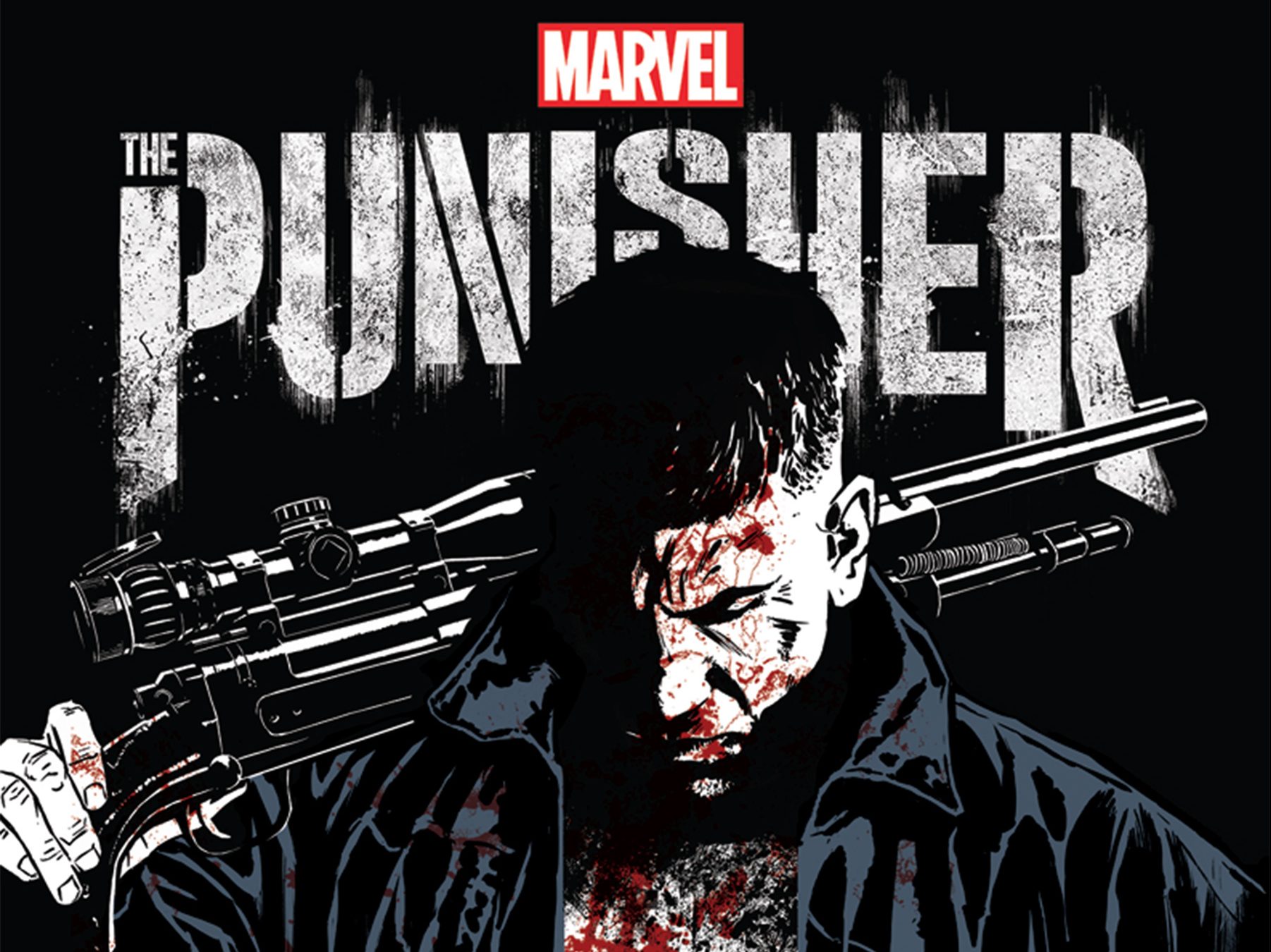The Punisher made his first appearance in the comic “The Amazing Spider-Man” #129, in 1974, as a villain. He’s a gun-toting bruiser, going after the titular hero for the apparent murder of Norman Osborn, unaware that Spider-Man didn’t kill Osborn or that Osborn’s alter-ego is the Green Goblin.
And although one of the tenets of being a superhero is no killing, the Punisher doesn’t wait around for a system he believes is broken to take action, meaning any villain who crosses the vigilante’s path doesn’t survive to tell the tale. A former United States Marine, Frank Castle was a scout sniper who returned from the war only for his wife and two children to be murdered by New York City’s gangs for witnessing a killing in Central Park. The grief and rage Castle experiences after the loss fuels his one-man war on every mobster in New York. Castle is unable to rest until he’s seen justice done for his family.
Unlike other characters whose stories are changed to better fit the big screen, Frank Castle’s MCU origin story is similar to his comic book counterpart. The second season of “Daredevil” finds the Punisher battling against Daredevil, pitting them on opposite ends of the vigilante ideology spectrum. The Punisher is systematically tracking down every member of the three gangs involved with the death of his family and putting them down. The bodies left in his wake attract Daredevil’s attention, and the two disagree vehemently on the possibility of rehabilitation for criminals. Daredevil believes it’s possible and refuses to kill, while the Punisher’s moral code dictates that one transgression is enough to end a life.
The four or so episodes that focus solely on the antagonistic relationship between the Punisher and Daredevil are the strongest of the season. The season ends with Castle presumed dead and in hiding, continuing his war against the city’s gangs.
The first episode of the Marvel Netflix series “The Punisher” depicts Castle killing the last few members of each gang in the opening scene. Logically, after getting his justice, Castle should stop murdering people. And he does, for a little while. The show directly confronts themes of trauma and PTSD, delving into how war veterans feel after returning home. Castle struggles to deal with the fact that he undoubtedly followed illegal orders and killed innocents. In serving his country, Castle was also betrayed by it. In the aftermath, when there is nothing left but silence, Castle is forced to contend with the idea that he likes killing. He’s good at it.
When he later finds out that his family was murdered in an elaborate government cover-up, his relief at having more people to kill is almost palpable.
There’s a scene in “The Punisher” in which journalist Karen Page pens an op-ed in “The New York Bulletin,” telling readers (and viewers), “We must not tolerate those who use violence to communicate.” It’s a strong statement, rooted in both the violence running rampant in her fictional New York City and the real world. The show itself had its release date pushed back several weeks following the Las Vegas shooting in October to pay respect to the victims of the tragedy.
Page is responding to a letter from Lewis Wilson, a terrorist who believes that the United States government is infringing upon his Second Amendment rights, and seeks to eradicate those he perceives as enemies. Wilson wrote Page under the assumption that she would support his agenda due to her outspoken defense of the Punisher, and threatens her life as well as the lives of her coworkers at the “Bulletin” when she publically discounts him.
Immediately after this scene, the episode cuts to Frank Castle, the show’s protagonist and incredibly dubious anti-hero. Frank Castle as the Punisher is a story rooted in violence—Castle murders his enemies and will not hesitate to draw out their pain before they finally die. Wilson is set up as a foil for Castle, an attempt to interrogate the complicated morality behind a murderous vigilante who targets only those he perceives to be evil. Castle watches news coverage of the bombings and expresses his disgust toward cowards who resort to explosives in the first place. It’s made explicitly clear to the audience that Wilson is not of the same ilk as Castle.
https://www.youtube.com/watch?v=lIY6zFL95hE
But what makes them different?
Since it was announced that the Punisher was getting his own show, a lot of debate has surrounded the character’s use of guns and often excessive violence. The Punisher doesn’t shy away from torture or killing. The political rhetoric surrounding the gun-control debate is messy and nuanced; as a result, the series treads carefully around the discussion. The result, however, is a rather vague stance that appears to stake no claim on either side of the fence. The inclusion of gun control feels tacked on, dropping the ball on episodes worth of character and story development. Castle says he looks the men he kills in the eyes and abhors the use of bombs; a couple episodes later, he stabs a man from behind and uses his decapitated head as a bowling ball, which literally explodes into a group of unwitting contract mercenaries.
The show digs its heels deep into the idea that Castle is better than Wilson, simply because Castle is killing people who deserve to die. And while Wilson’s bombs do target innocent civilians, this is a tenuous idea to pin an entire series on, nevermind an entire character. Castle has the virtue of being the protagonist of the show and partial to receiving the audience’s sympathy. His backstory is tragic, his quest righteous—despite also being vengeful and violent—but tragedy is not an excuse to start killing people.
Karen Page says to Wilson herself that plenty of people have awful things happen to them and they don’t take up murder for a hobby as a result. The real question to address, and an equally interesting one to consider, is what gives the Punisher the power to decide who lives or dies? What does it take for the show’s narrative to consider him a terrorist, too? The sole difference between Wilson and Castle appears to be that Castle is simply better at being a vigilante.
Perhaps the weakest aspect of the series’ attempt to contribute to the national conversation comes in the form of character Senator Stan Ori. Ori is introduced immediately as a proponent of tougher gun-control laws, taking an extreme stance in calling for all guns to be taken away from the general public. His arguments are constantly refuted by other characters, and his beliefs are often painted as hypocritical, such as when he tells Karen Page, a legal gun owner with a concealed-carry permit, that she should allow society to protect her while they sit in a room guarded by his armed private-security team. Ori is a caricature rather a fleshed-out character with a strong political stance.
“The Punisher” asks a lot of questions and seems to provide only one concrete answer: bombs are bad. Frank Castle is a complicated character dealing with trauma and grief in an incredibly unhealthy manner. He’s not a hero and doesn’t want to be one. However, the showrunners chose to interrogate the complex subject matter of gun control, though they forgot almost entirely to interrogate their protagonist’s role within that debate. As a result, the theme that they chose to engage with meshes poorly with their desire to have a protagonist they can still call, on some level, a good guy.
Check our article on another marvel hero that touches up on a current issue.

















